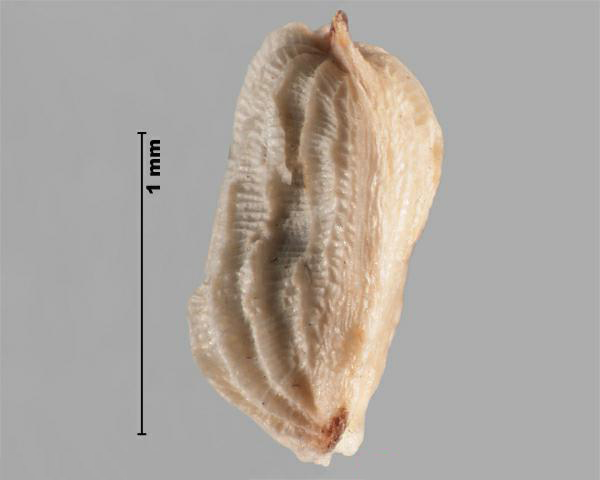Family
Orobanchaceae
Synonyms
Odontites serotina
Common Name
Red bartsia
Regulation
Primary Noxious, Class 2 in the Canadian Weed Seeds Order, 2016 under the Seeds Act.
Distribution
Canadian: Occurs in AB, MB, NB, NL, NS, ON, PE, QC, SK (Brouillet et al. 2016Footnote 1).
Worldwide: Native to Europe and temperate Asia and introduced in North America (USDA-ARS 2016Footnote 2). In the United States it is found in the northeast and Great Lakes regions (Kartesz 2011Footnote 3).
Duration of life cycle
Annual
Seed or fruit type
Seed
Identification features
Size
- Seed length: 1.3 - 2.3 mm
- Seed width: 0.8 - 1.3 mm
Shape
- Seed elongate oval
Surface Texture
- Seed has a thin coating that is longitudinally ribbed with thin transverse ridges
Colour
- Outer coating is white to pale yellow; the seed underneath is reddish with darker ends
Habitat and Crop Association
Cultivated fields, old fields, pastures, hay crops, native grasslands, roadsides and railway lines (Darbyshire 2003Footnote 4, Alberta Invasive Species Council 2014Footnote 5). Does not compete well with annual crops (Alberta Invasive Species Council 2014Footnote 5).
General Information
Red bartsia was first introduced into Manitoba in packing crates (Manitoba Agriculture, Food, and Rural Initiatives, n.dFootnote 6). It can be spread in contaminated hay, as a seed contaminant, or by sticking to clothing and equipment such as all-terrain vehicles (Alberta Invasive Species Council 2014Footnote 5).
Red bartsia is a semiparasite, being able to survive on its own but feeding off the roots of a wide range of grass and forb species when conditions are adverse (Alberta Invasive Species Council 2014Footnote 5).
Similar species
Eyebright (Euphrasia officinalis)
- The seeds of eyebright are a similar size, elongate oval shape, with a white, ribbed coating.
- The white coating of eyebright seeds is thinner than in red bartsia, allowing the reddish colour of the seed surface to show through.
Photos




Similar species

